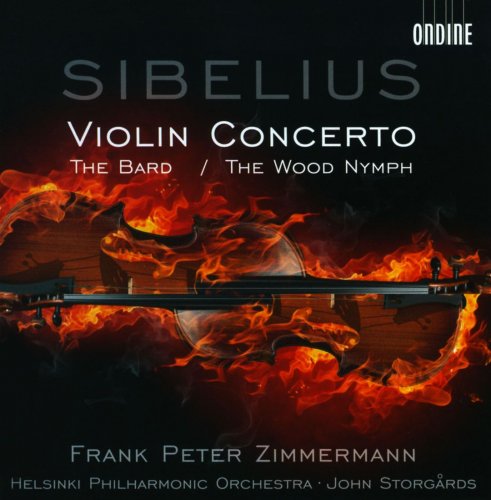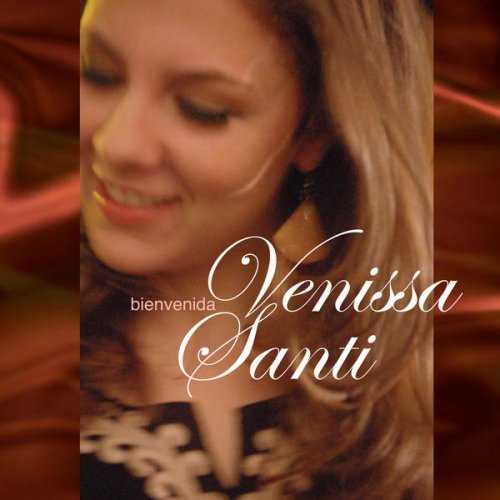Frank Peter Zimmermann - Sibelius - Violin Concerto, The Bard, The Wood Nymph (2010)

Artist: Frank Peter Zimmermann
Title: Sibelius - Violin Concerto, The Bard, The Wood Nymph
Year Of Release: 2010
Label: Ondine
Genre: Classical
Quality: FLAC (image+.cue,log,scans)
Total Time: 62:57
Total Size: 281 Mb
WebSite: Album Preview
Tracklist: Title: Sibelius - Violin Concerto, The Bard, The Wood Nymph
Year Of Release: 2010
Label: Ondine
Genre: Classical
Quality: FLAC (image+.cue,log,scans)
Total Time: 62:57
Total Size: 281 Mb
WebSite: Album Preview
Jean Sibelius (1865-1957)
[1]-[3] Violin Concerto in D minor, Op.47 (1905)
[4] The Bard, symphonic poem, Op. 64 (1914)
[5] The Wood Nymph, symphonic poem, Op. 15 (1895)
Performers:
Frank Peter Zimmermann, violin
Helsinki Philharmonic Orchestra
John Storgårds, conductor
Frank Peter Zimmermann offers a fresh and exciting view of the Violin Concerto, less sentimental than some, with swift tempos and a dazzlingly swift finale. He phrasing is sometimes a touch angular, particularly in the first movement, and this usually works well, putting an arresting slant on tunes we feel we've heard a million times before. Only the very opening misfires a bit: yes, it's marked mezzo-forte, but it's also marked "dolce ed espressivo", and Zimmermann's somewhat wiry tone is neither. But as soon as the performance settles down, about a minute in, it's smooth sailing and very enjoyable listening.
The couplings further elevate the claims of this release on your purse. Neither work is very well known. The Bard, contemporaneous with the Fourth Symphony, is one of Sibelius' most elusive tone poems: beautiful and sad, with its elegiac harp solo and climactic brass calls. The Wood Nymph has had only one previous recording, an excellent one from Vänska and the Lahti Symphony. The newcomer uses the recently published critical edition--the work was neither revised nor printed in Sibelius' lifetime, though it's a vintage piece from the same period as En Saga, to which it bears some resemblance. I secured a copy of the manuscript while working on my Sibelius book, and it's an absolute mess. Hopefully publication will allow the piece to become as popular as it deserves to be.
John Storgards, now music director of the Helsinki Philharmonic, conducts all of this music with unaffected mastery. It goes without saying that the orchestra knows the music (although The Wood Nymph remains a novelty), but they play superbly nonetheless. Like his predecessor, Leif Segerstam, Storgards is himself a violinist, and few composers benefit more from having a string player on the podium--not so much for the tunes, but in getting the sections to articulate those typically Sibelian, "cross-hatched" accompaniments that propel the music forward and energize its textures. The engineering is generally excellent, particularly in the concerto, although a touch dry in the bass. This one's a keeper. -- David Hurwitz, ClassicsToday
The couplings further elevate the claims of this release on your purse. Neither work is very well known. The Bard, contemporaneous with the Fourth Symphony, is one of Sibelius' most elusive tone poems: beautiful and sad, with its elegiac harp solo and climactic brass calls. The Wood Nymph has had only one previous recording, an excellent one from Vänska and the Lahti Symphony. The newcomer uses the recently published critical edition--the work was neither revised nor printed in Sibelius' lifetime, though it's a vintage piece from the same period as En Saga, to which it bears some resemblance. I secured a copy of the manuscript while working on my Sibelius book, and it's an absolute mess. Hopefully publication will allow the piece to become as popular as it deserves to be.
John Storgards, now music director of the Helsinki Philharmonic, conducts all of this music with unaffected mastery. It goes without saying that the orchestra knows the music (although The Wood Nymph remains a novelty), but they play superbly nonetheless. Like his predecessor, Leif Segerstam, Storgards is himself a violinist, and few composers benefit more from having a string player on the podium--not so much for the tunes, but in getting the sections to articulate those typically Sibelian, "cross-hatched" accompaniments that propel the music forward and energize its textures. The engineering is generally excellent, particularly in the concerto, although a touch dry in the bass. This one's a keeper. -- David Hurwitz, ClassicsToday






![Tomasz Stanko, Polskie Radio - Jazz Rock Company: Live at Akwarium (Polish Radio Sessions vol. 6/6) (2025) [Hi-Res] Tomasz Stanko, Polskie Radio - Jazz Rock Company: Live at Akwarium (Polish Radio Sessions vol. 6/6) (2025) [Hi-Res]](https://www.dibpic.com/uploads/posts/2025-12/1765796554_cover.jpg)

![Koldo Munné & 1520's Ensemble - Live at Jamboree Live Music (2025) [Hi-Res] Koldo Munné & 1520's Ensemble - Live at Jamboree Live Music (2025) [Hi-Res]](https://www.dibpic.com/uploads/posts/2025-12/1765846749_ck2b0xbsb8jna_600.jpg)